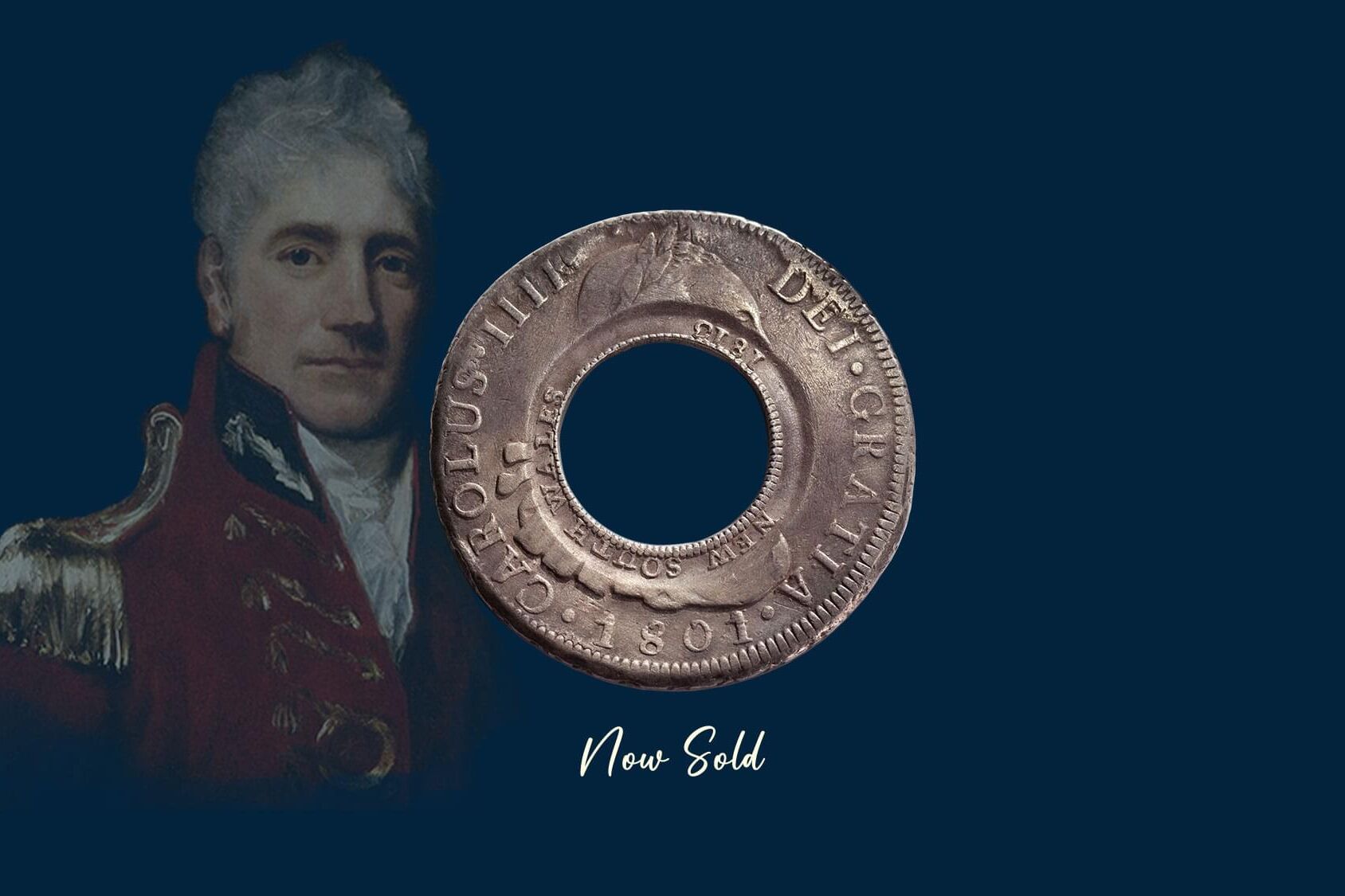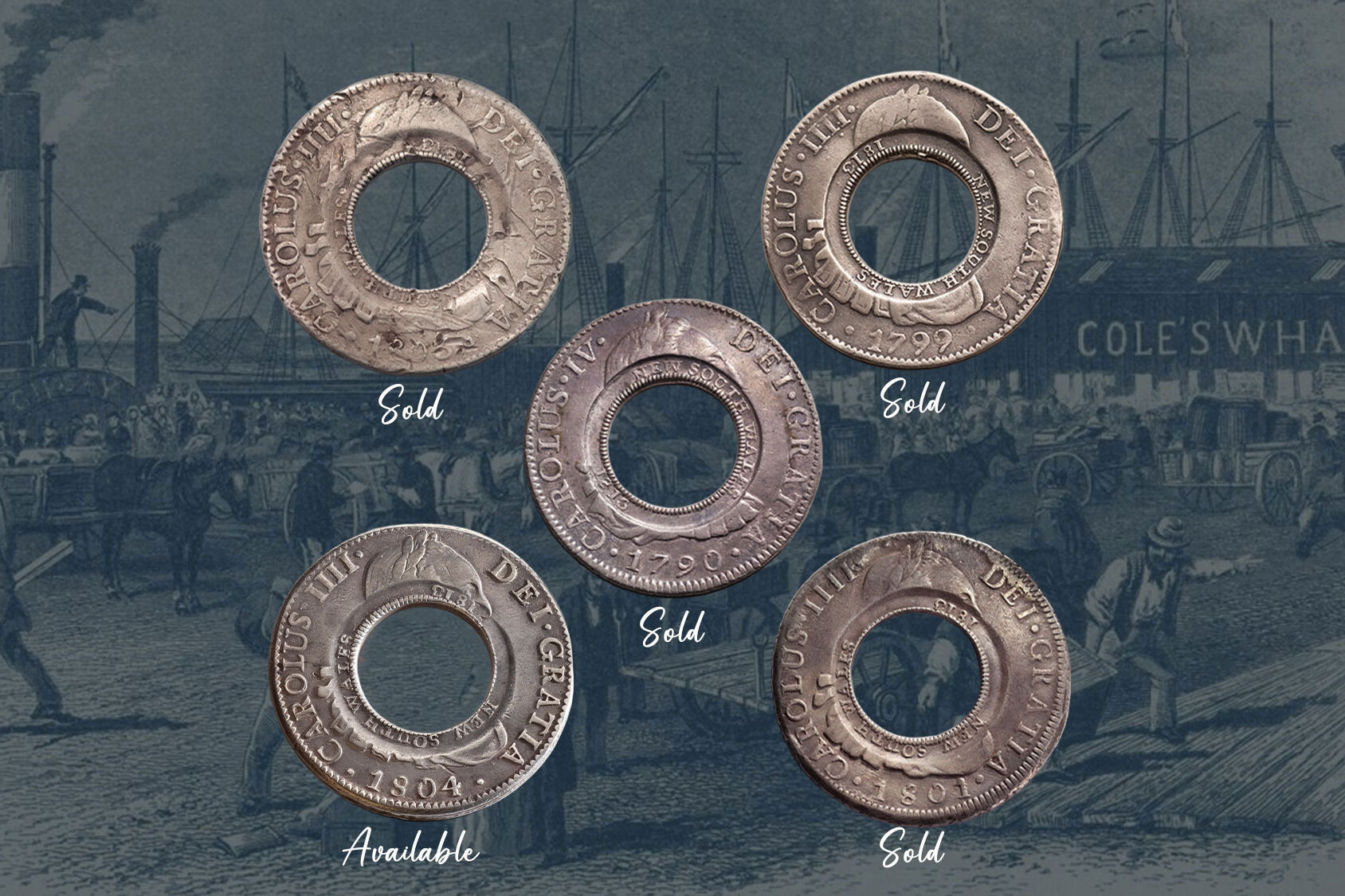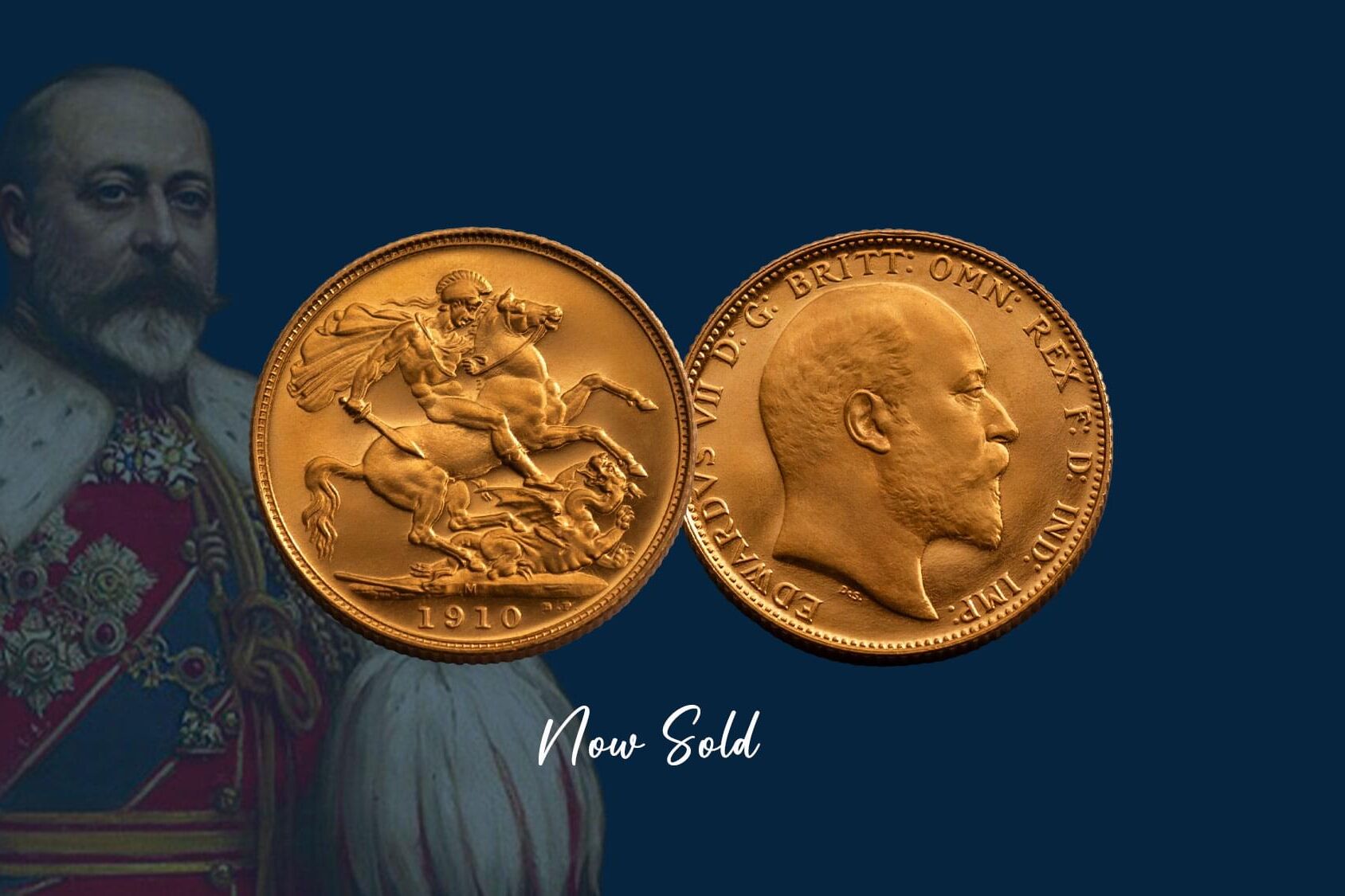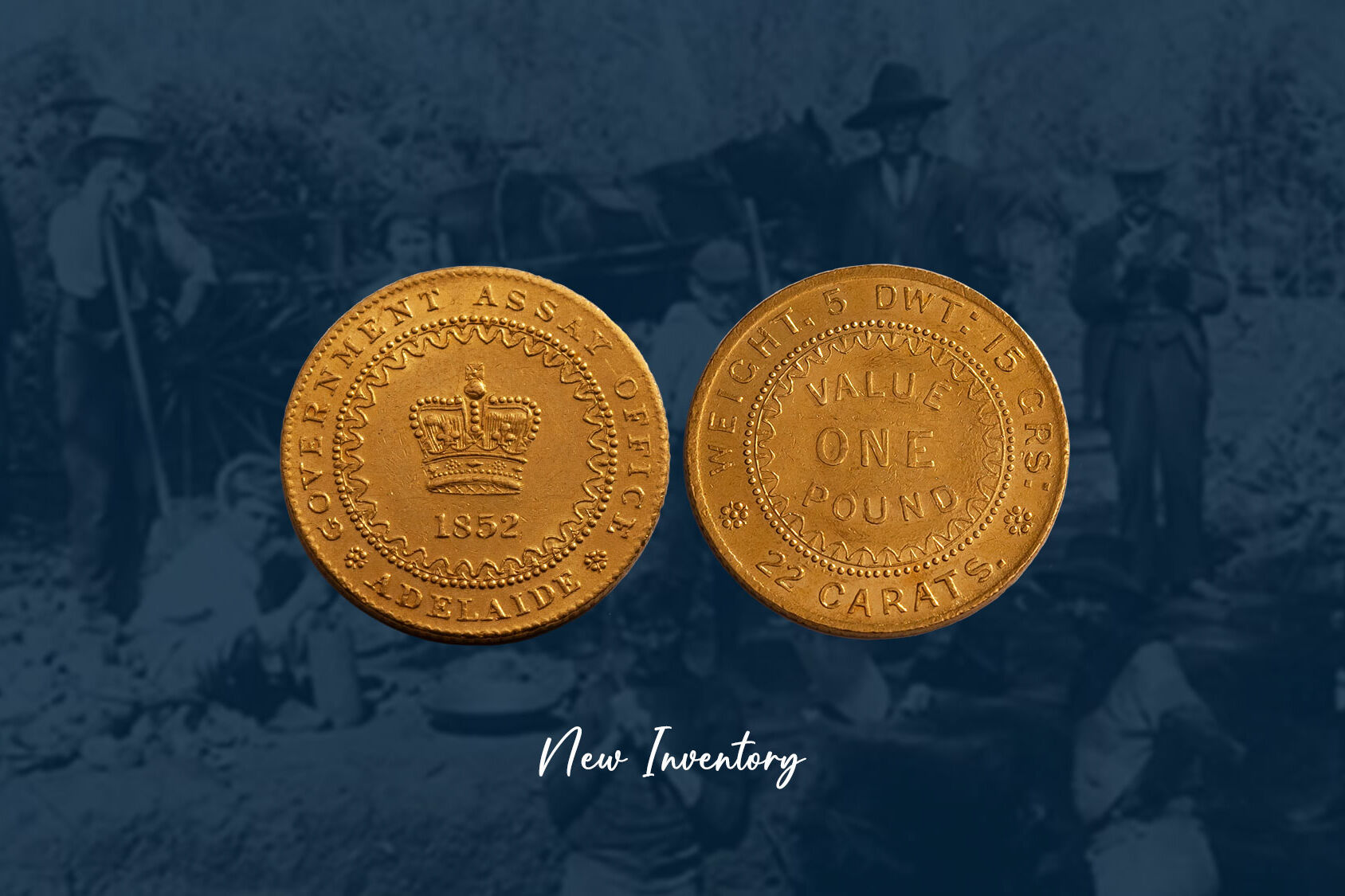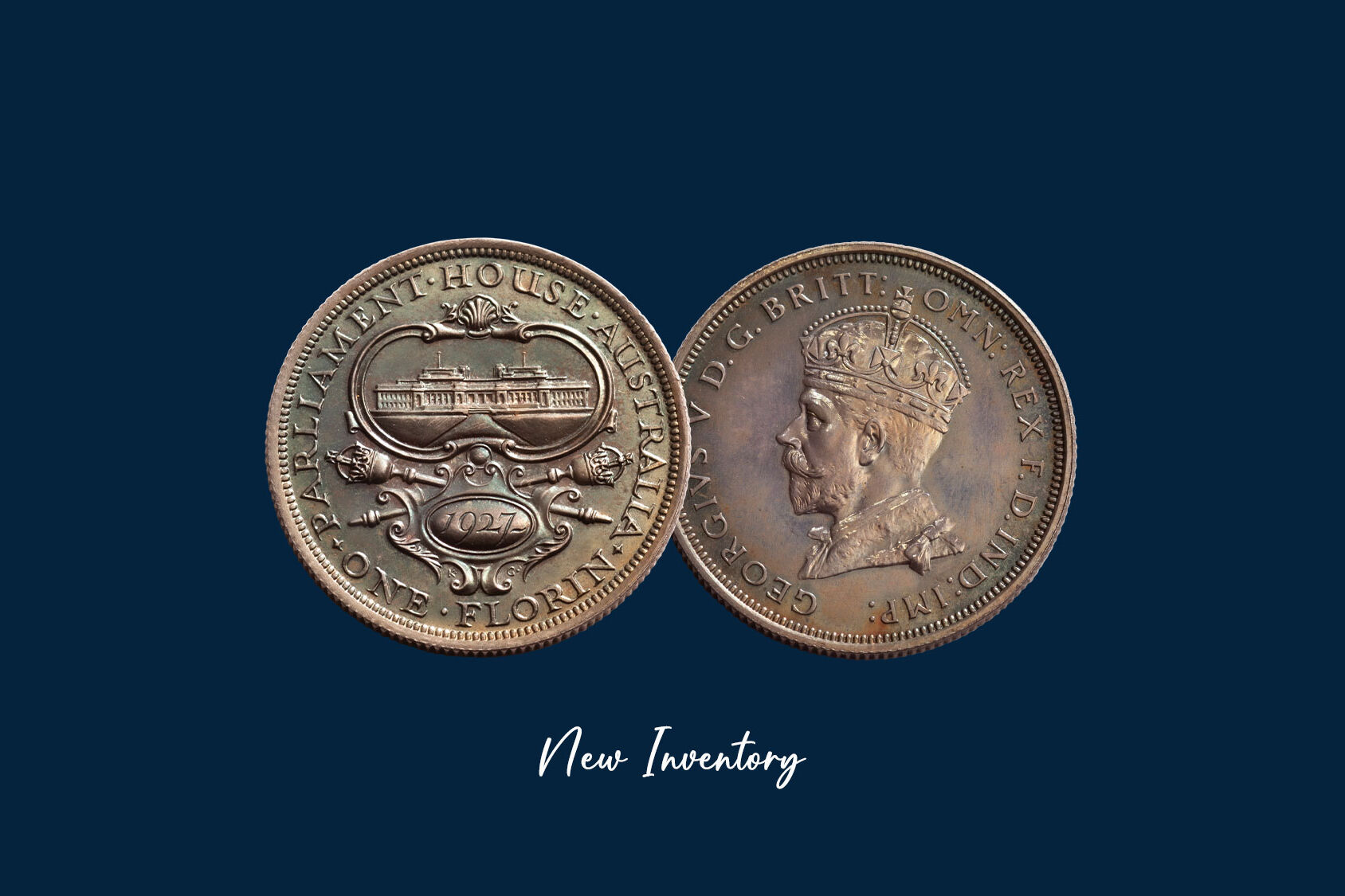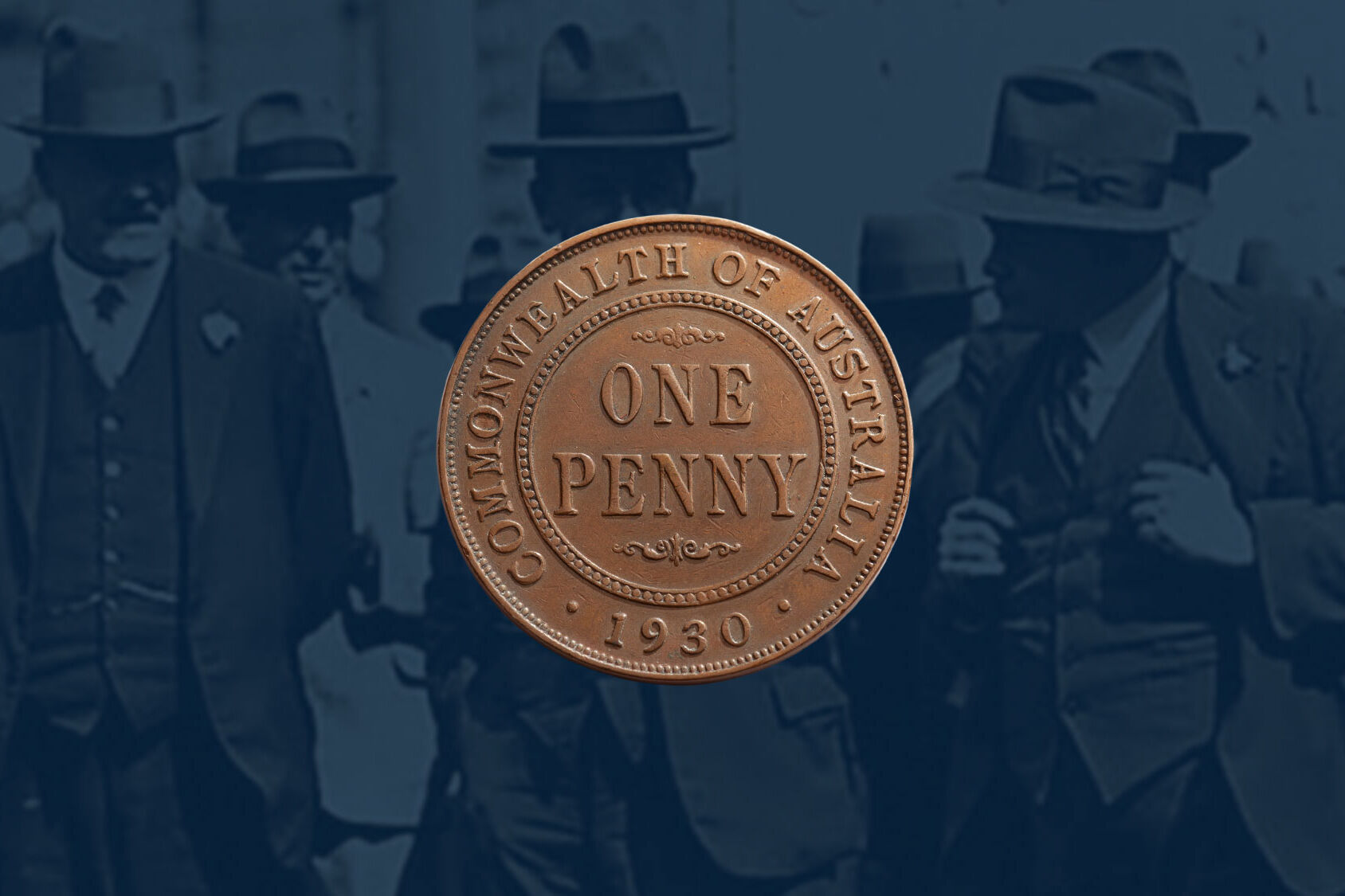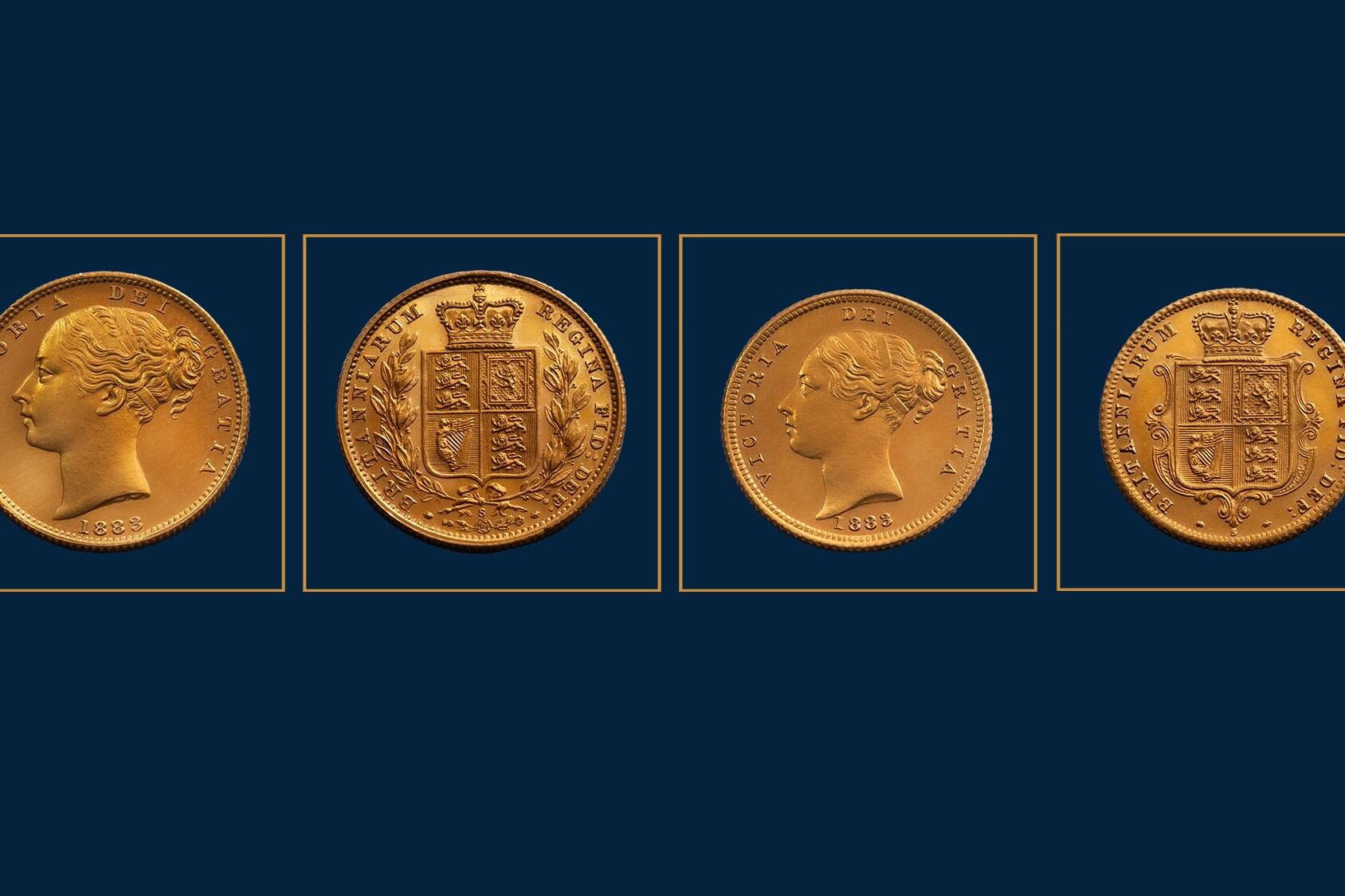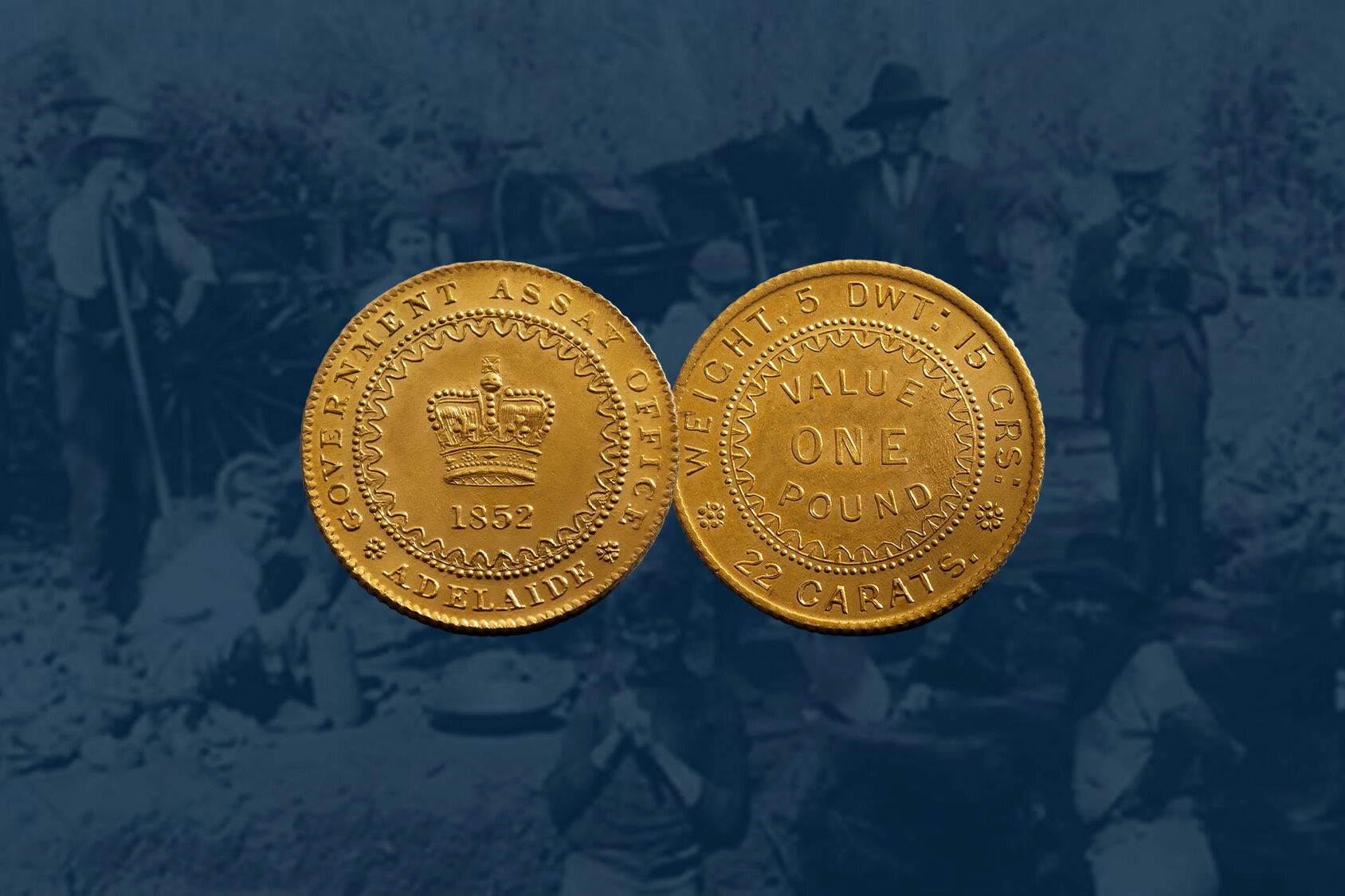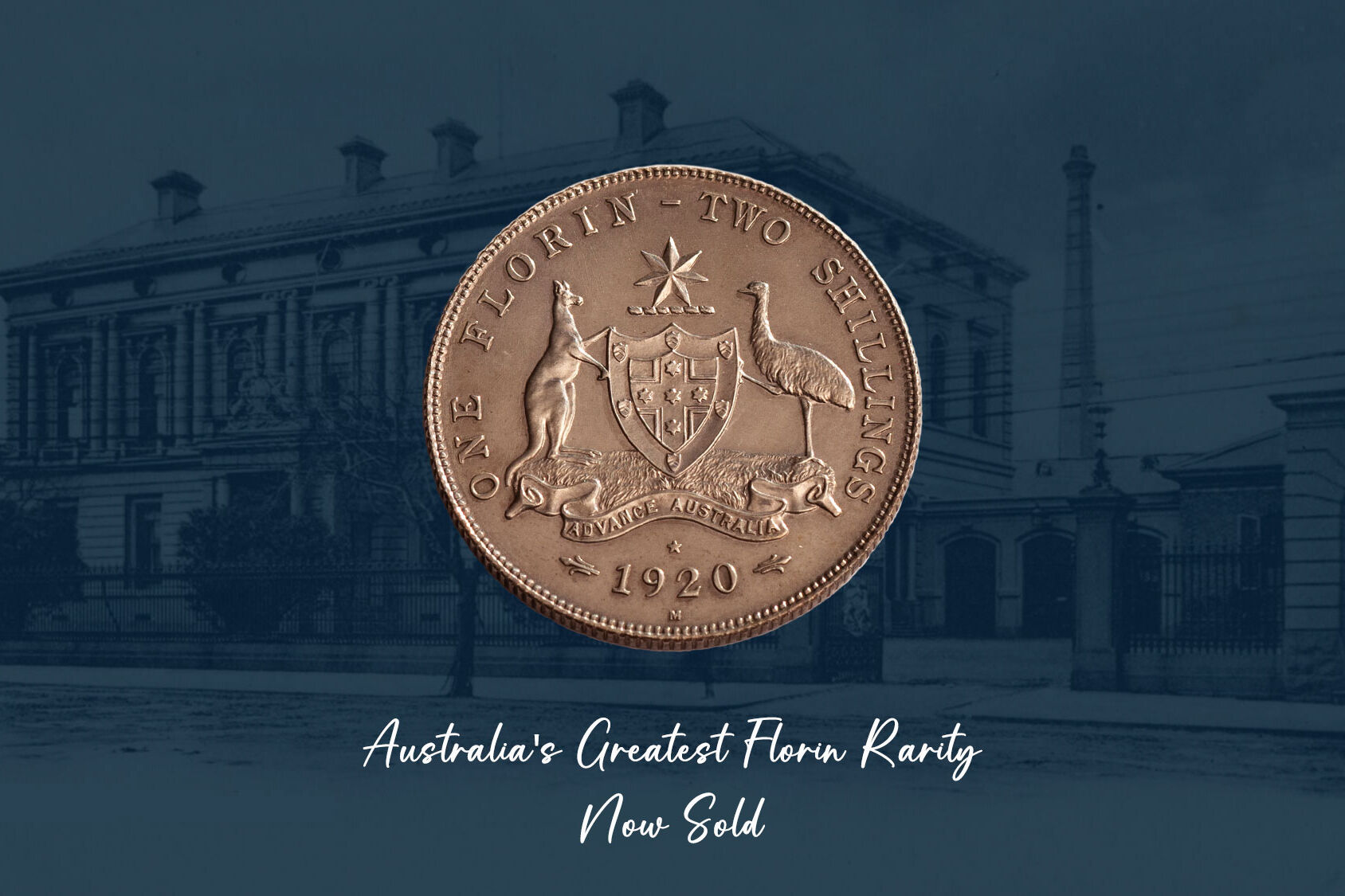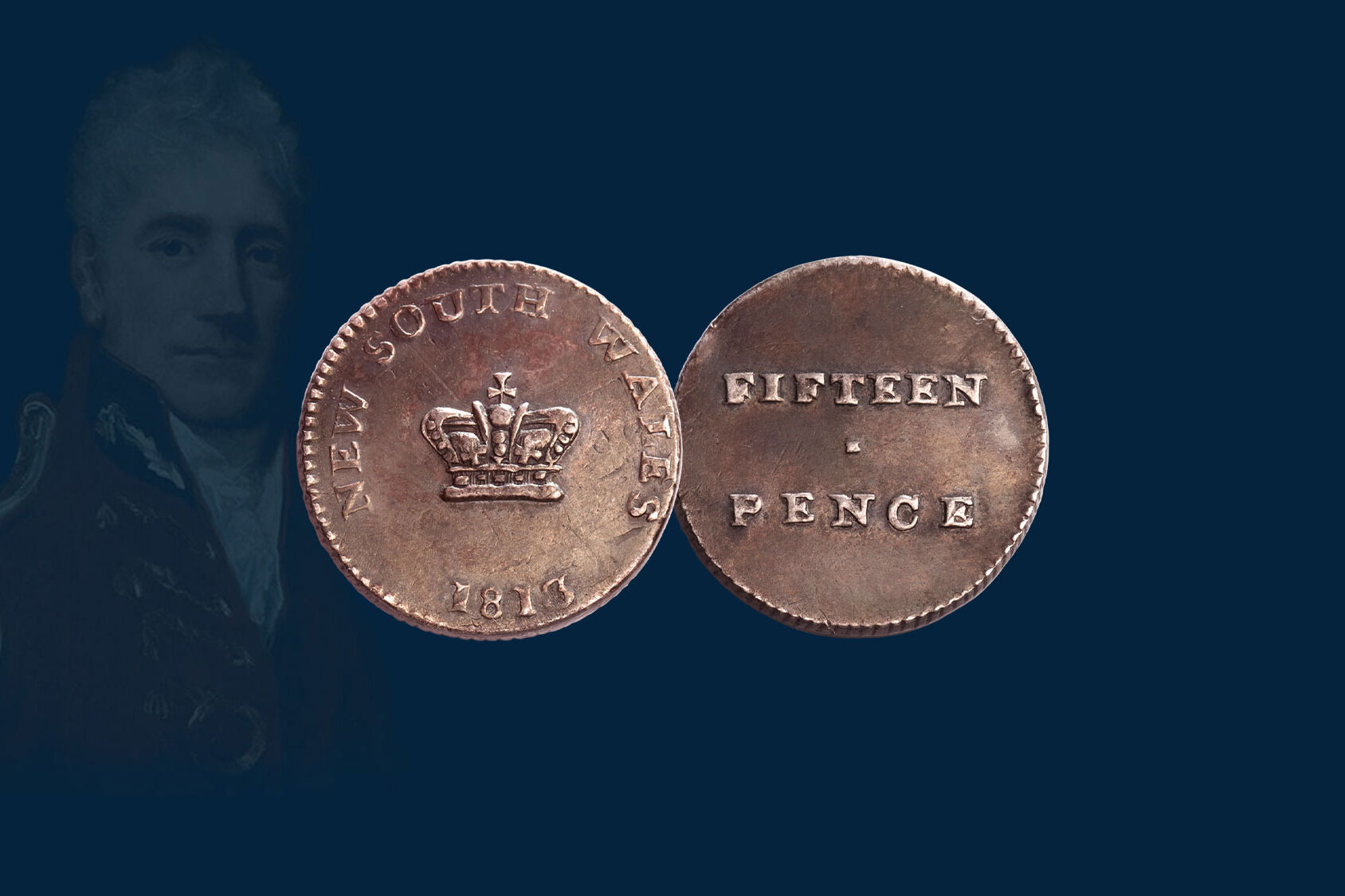1813 Dump struck from the rare D/2 dies
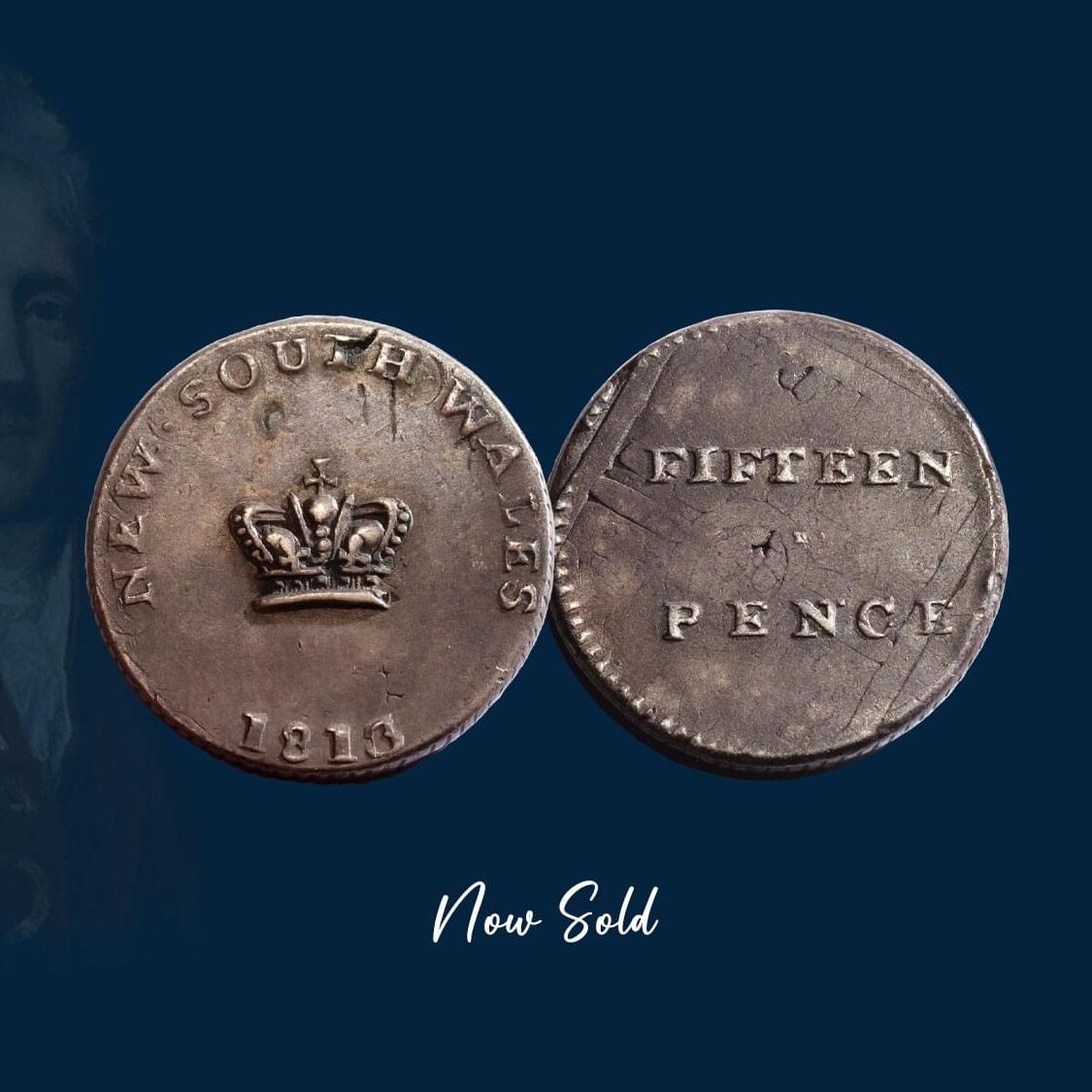
Lachlan Macquarie's initiative in creating our first currency reflected his Scottish culture, of being practical and resourceful. He created two coins, the Holey Dollar and the Dump, out of one coin. A single Spanish Silver Dollar. And while the Holey Dollar clearly shows that it was carved out from a Spanish dollar, sadly most Dumps don't reflect their origins and look as though they could have been minted from an ordinary blank silver disc. Not so with this 1813 Dump. The coin is a dynamic example of Australia’s first fifteen pence with extensive undertype on the reverse that confirms it was struck from a bust style Spanish Silver Dollar. Other quite extraordinary elements of this coin include the 'H' for Henshall (not normally present in D/2 Dumps) and the fullness of the legend and date (normally shallow in D/2 Dumps). Beautifully toned, highly reflective surfaces, pristine design detail ... this 1813 Dump was last sold in 2001 and is available now.
The industry acknowledges that there are about one thousand surviving examples of the 1813 Dump, with eight hundred available to collectors, the balance held in museums and public institutions.
Within that collector pool, the Dump appears in four distinctly different die combinations or styles. The four combinations have been classified by respected collector and author Bill Mira as the type A/1, D/2, E/3 and C/4, the letter referring to the obverse die, the numeral representing the reverse die.
On the obverse, the different styles are reflected in the shape of the cross on the crown, the position of this cross in relation to the letters in the legend above it. And in the shapes and positioning of the row of five jewels in the band of the crown.
On the reverse, differences are found in the distances between the words 'FIFTEEN' and 'PENCE' and in the position of the 'T' in 'FIFTEEN' in relation to the 'N' in 'PENCE'.
Historians believe that the C/4 and E/3 dies were used to produce test pieces, presented to Governor Macquarie for approval before production began. While they are incredibly rare, the coins are crude and quite esoteric.
The A/1 and D/2 Dumps are viewed by collectors as 'mainstream' with the A/1 Dump the most frequently sighted (75% of examples). And the D/2, the rarer of the two (20% of examples).
Historians argue that the D/2 design types were most likely the first coins produced, since the majority of specimens reflect one major design fault. The legend and the date tend to be partially struck because the dies were too big for the blank. And the denticles (introduced as a security measure) are almost always absent.
This coin is an exceptional piece for it has design detail and shows a finesse in the striking that is not normally seen in the D/2 type. The legend and the date are contained in the coin.
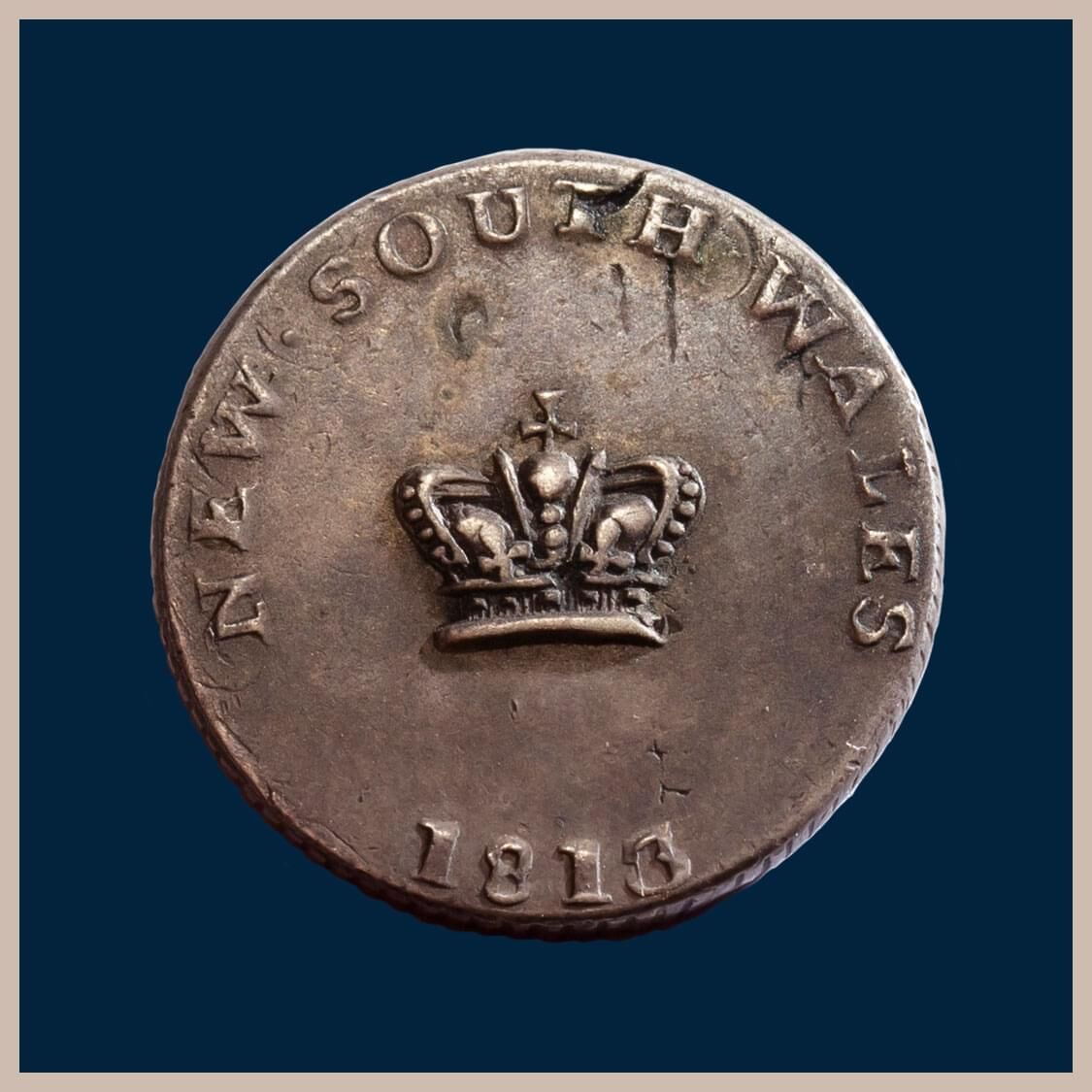
1813 Dump
struck using the D/2 dies
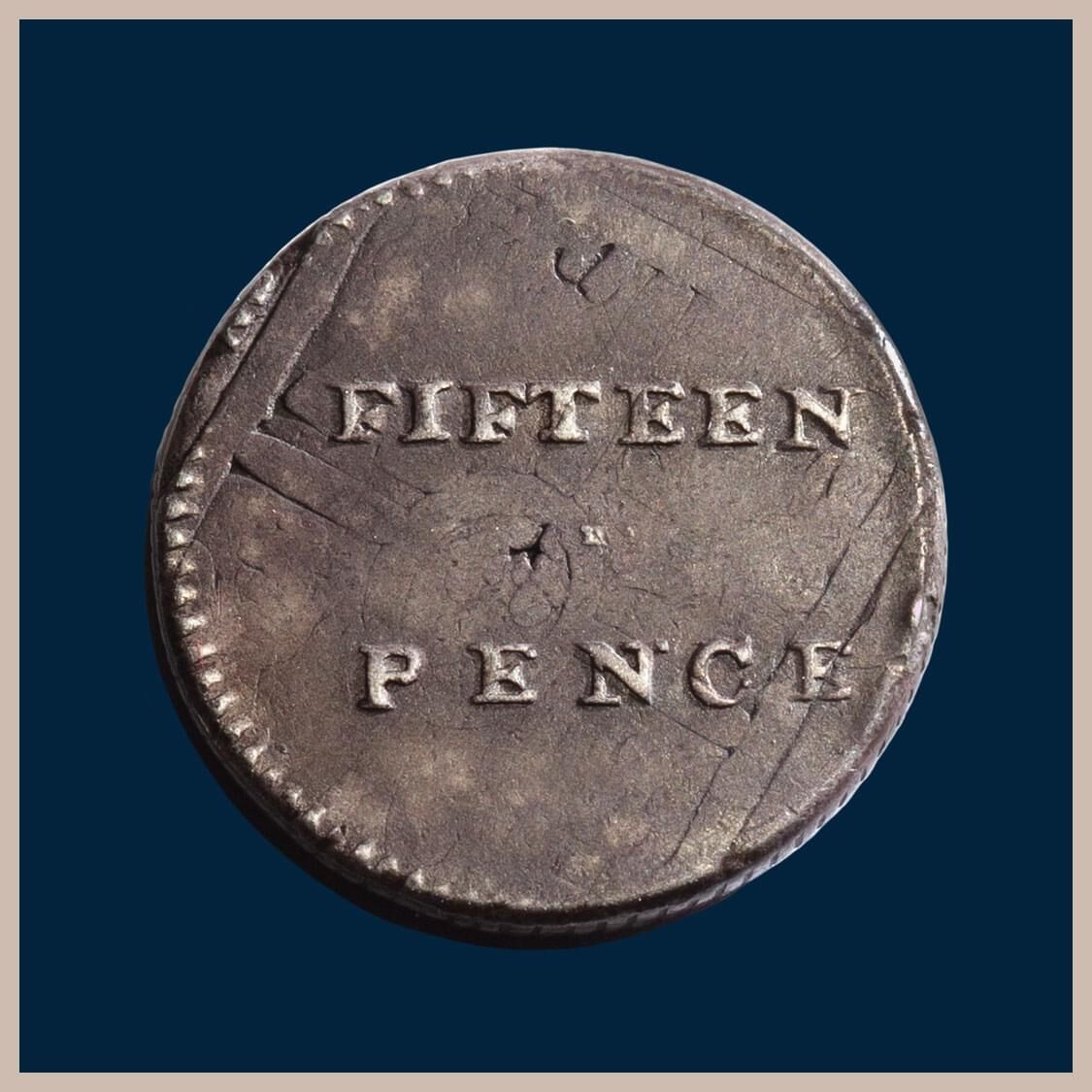
1813 Dump
struck using the D/2 dies
Lachlan Macquarie had high hopes for the Holey Dollar and Dump, and in particular the Dump. He stated that the Dump would fill the role of small change and would remove much of the need for promissory notes of low denominations.
As a coin intended as small change, the Dump circulated widely in the colony, the extreme wear on most examples evidence of their considerable use.
This 1813 Dump with a quality level of Extremely Fine, is amongst the top ten D/2s and one of the finest known of all design types. In the hand the coin is impressive, the fields are highly reflective with grey toning.
There is no doubt that heat was involved in the creation of the Dump. When the disc fell out of the centre of the Spanish Dollar, it still bore the original dollar design of a four quadrant shield, depicting a lion and castle in each quadrant. High temperatures obliterated the original Spanish Dollar design from most Dumps.
This Dump has extensive evidence of the original Spanish Dollar design on the reverse, that evidence includes the cross-bars of the shield and the lion's tail and the castle. Amazing!
Convicted forger and emancipist, William Henshall, was hired to create the nation's first currency, effectively our first Mint Master. He declared his involvement in the creation of the Dump by inserting his initial, an 'H' for Henshall, on some - but not all - of the reverse dies of the Dump.
The 'H' for Henshall is rarely ever seen on D/2 Dumps. And on the reverse of this coin it is plump and three-dimensional.
There is more in store for the buyer when when you take this coin under an eye glass. Two other outstanding attributes are noted.
The extreme left and right edge of the horizontal cross on the orb at the top of the crown is evident. Most collectors would not even be aware that, as with the 1852 Adelaide Pound, the Dump design includes a cross on the orb at the top of the crown.
And there is a 'stop' in the legend 'NEW SOUTH WALES' after 'NEW' and after 'SOUTH'. The dies would have had shallow depressions to create the stops and must have quickly filled with debris for they can be difficult - or impossible - to discern on even the best of D/2 examples.
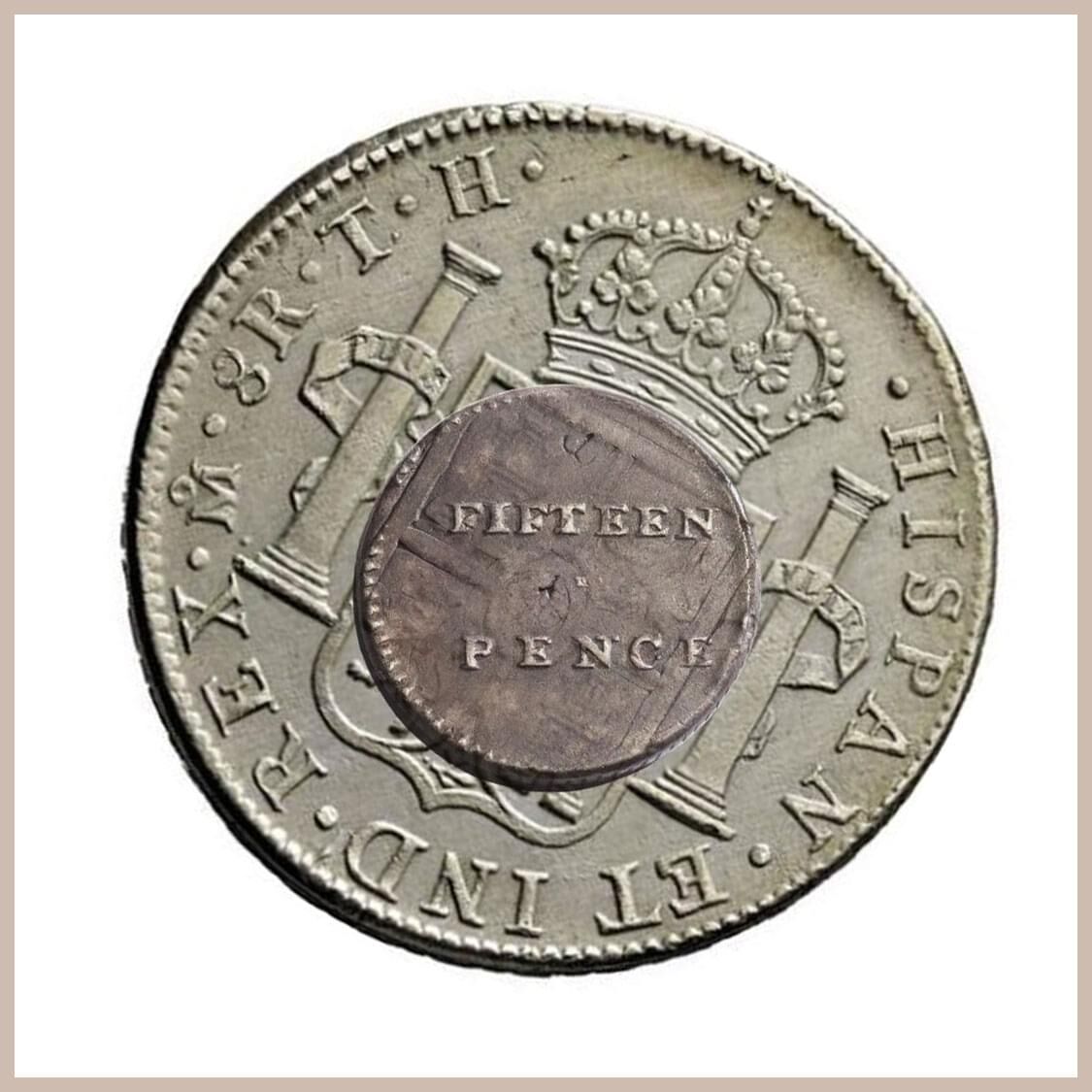
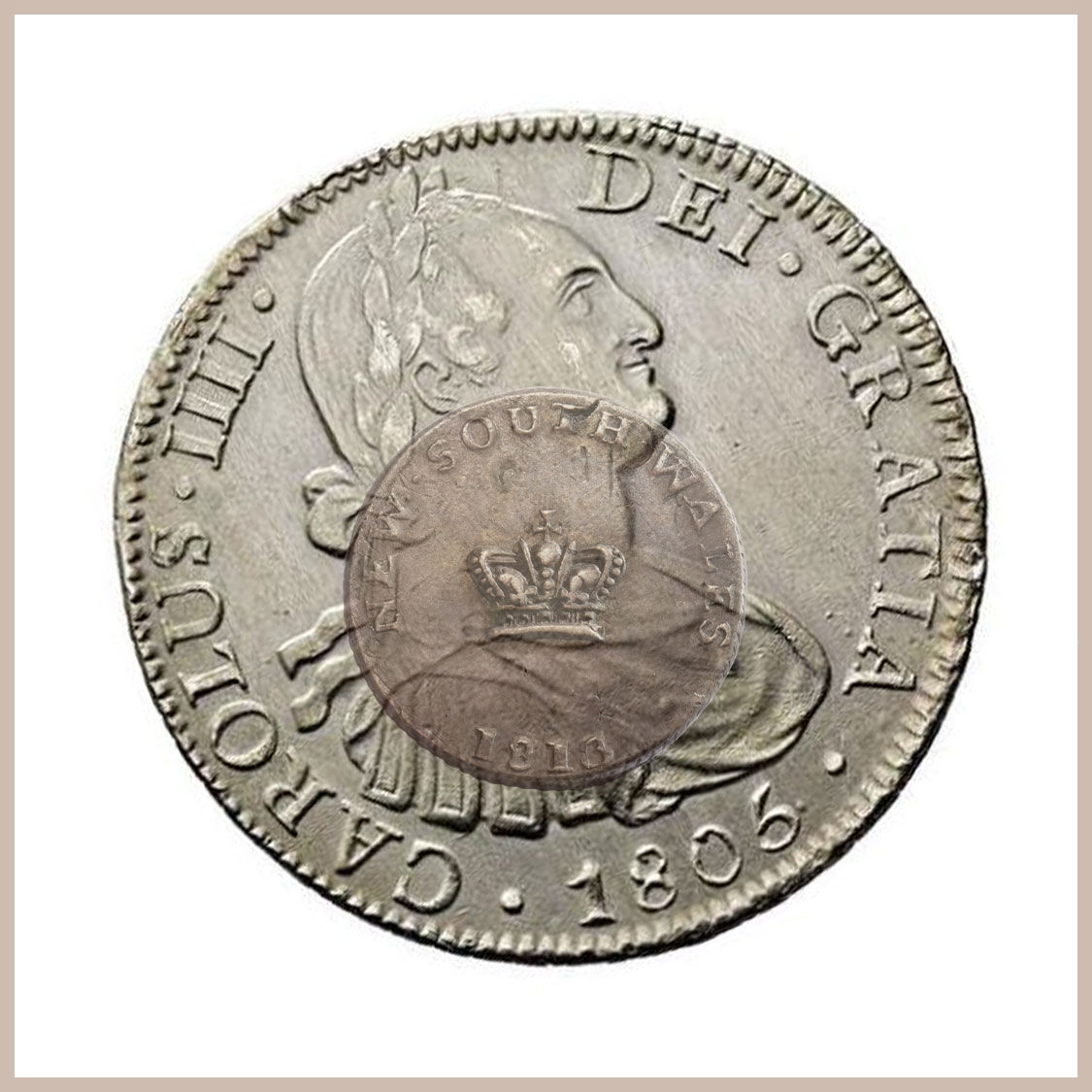
1813 Dump struck from the rare D/2 dies
$75,000
Lachlan Macquarie's initiative in creating our first currency reflected his Scottish culture, of being practical and resourceful. He created two coins, the Holey Dollar and the Dump, out of one coin. A single Spanish Silver Dollar.
And while the Holey Dollar clearly shows that it was carved out from a Spanish dollar, sadly most Dumps don't and look as though they could have been struck from an ordinary blank silver disc.
Not so with this 1813 Dump.
The coin is a dynamic example of Australia’s first fifteen pence and clearly reflects its origins with strong undertype on the reverse that confirms it was struck from a bust style Spanish Silver Dollar.
Other quite extraordinary elements of this coin include the 'H' for Henshall (not normally present in D/2 Dumps) and the fullness of the legend and date (normally shallow in D/2 Dumps).
Beautifully toned, highly reflective surfaces, pristine design detail.
Highlights of our Inventory
© Copyright: Coinworks
